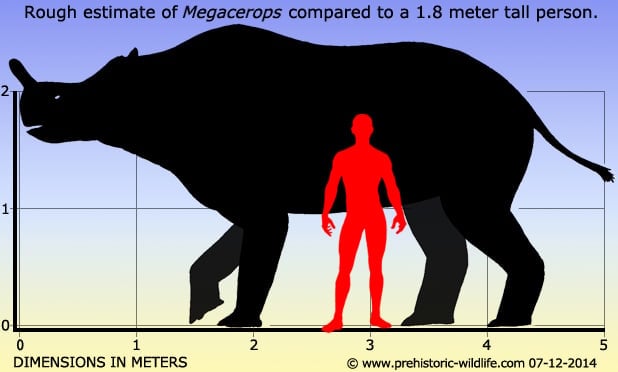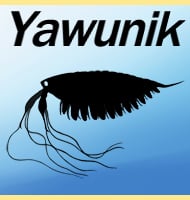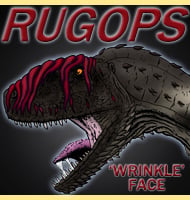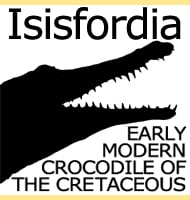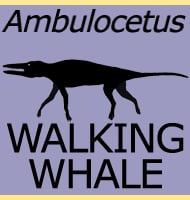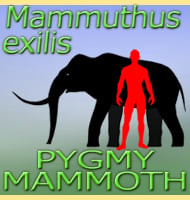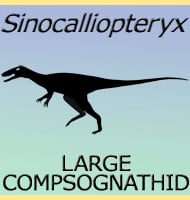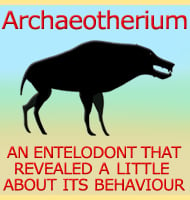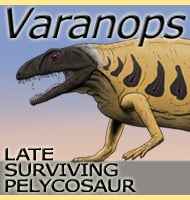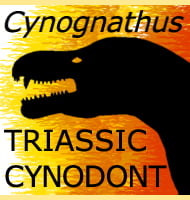In Depth
Since the early days of palaeontology many genera of brontotheres have been named from North America, though now after over one hundred and fifty years of continuous study and discovery, many of these have now been perceived to be synonymous with the genus Megacerops. Some of these names include genera such as Brontops and Atelodon, but by far the most famous of all these is Brontotherium, a genus that has received a large amount of publicity due in part to the name which translates as ‘thunder beast’. However, now that Brontotherium is synonymous (the same) with Megacerops, it must be remembered that older sources mentioning Brontotherium, are actually referencing Megacerops, even if they did not intend to.
The inclusion of Brontotherium as a synonym to Megacerops may actually also have wider implications for the classification of these animals since Brontotherium was also the type genus of the Brontotheriidae, the group that all related animals including Megacerops were included within. Usually a group of animals is named after the first to be named and already it is unusual that a group should be named after an animal that was named after a genus that was named a few years after others (Brontotherium was named in 1873, whereas Megacerops was named in 1870). In addition to this now, it would be highly unusual for a group of animals to continue to be named after a genus now widely declared to be synonymous to another genus. Therefore it is not inconceivable for the Brontotheriidae to become something like the Megaceropsidae, unless of course Brontotheriidae can somehow obtain protected status.
Now talking about Megacerops as an animal, Megacerops was one of the larger herbivorous animals known to have lived upon the North American continent during the Late Eocene/Early Oligocene. When compared to modern day animal forms, Megacerops would have been superficially similar to a rhinoceros; So far all individuals of Megacerops are noted for having a pair of blunt horns that rise upwards from the front of the snout, with individuals thought to be males having larger horns.
There is a popular theory about Megacerops in that males would fight each other with their larger horns for dominance within a group. There is even some fossil evidence which might support this since at least one male has been found with partially healed ribs, the injuries seemingly caused by a tremendous blow from the side. The only animals known to have rivalled large Megacerops in North America at this time were other large Megacerops. None of the predators around at the same time as Megacerops such as nimravids like Holplophoneus and Eusmilus, as well as creodonts such as Hyaenodon came close to the size of an adult Megacerops; it is fair to say that a fully grown adult Megacerops would have been immune from attack by any predator of the time in that location.
Megacerops was an animal adapted for browsing low growing vegetation, an analysis brought about by the observation that the teeth of Megacerops were much better for slicing leafy vegetation rather than grinding grass. Skull analysis also suggests attachment points for a long tongue and flexible lips which would have been ideal for stripping vegetation from branches. Ultimately however it was probably this specialisation combined with the large body size that caused the downfall of Megacerops. At this time, the world’s climate was drying out, and all over the world the lush forests that had dominated the planets ecosystems during the early Eocene were already being replaced by grassy plains. This shift in ecosystem caused a dramatic loss in available food bearing habitats as well as the development of new herbivores better able to survive in this changing world that enabled created greater competition for food sources. With the huge size now a hindrance since there was no longer enough food to support a large population, Megacerops were slowly edged out to the fringes of survival before finally going extinct.
Further Reading
- Contributions to the Stratigraphy and Palaeontology of the Goshen Hole Area, Wyoming. III. A New Basal Oligocene Formation. - Bulletin of the Museum of Comparative Zoology 76(3):71-93. - E. M. Schlaikjer - 1935. - The holotype specimen of Menodus giganteus, and the “insoluble” problem of Chadronian brontothere taxonomy. - Paleogene Mammals. Bulletin of the New Mexico Museum of Natural History 26. pp. 129–136. - M. C. Mihlbachler, S. G. Lucas & R. J. Emry - 2004.
